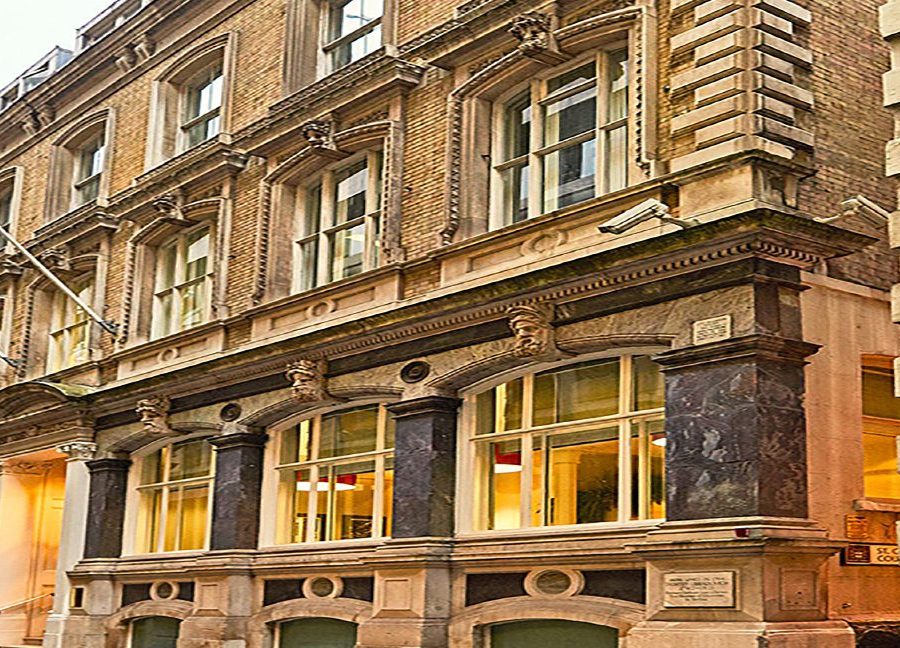Location:Lombard Street
Lombard Street Office Space
One would be forgiven for believing that Lombard Street office space is solely associated with the insurance sector due to its location within the EC3 district. However, its ancient roots are in banking.
Indeed, it was once famously compared by American journalist William L. Shirer to Wall Street.
The thoroughfare originates in one of the main Roman roads of Londinium. It later formed a plot of land granted by King Edward I in the 13th century to the so-called Lombard bankers, merchants and lenders from Lombardy in northern Italy.
Italy has a long history with the banking sector. The oldest bank in the world is the Banca Monte dei Paschi di Siena S.p.A. (BMPS), which can trace its history to an institutional pawnbroker founded in the 15th century in Siena and established in its present form in 1624 in Florence.
The vicinity was used as a merchant exchange from the twelfth century until the Royal Exchange became the leading trading site. Sir Thomas Gresham established the Royal Exchange in 1565, and the nearby Gresham Street was named for him in 1845.
Banking and insuring are interlinked, and the street established an official foothold in the insurance sector when the Navigation Act 1540 was passed, requiring ship owners to post notice of their sailing in Lombard Street.
Lloyd’s Coffee House, which eventually evolved into the global insurance market Lloyd’s of London, was based at No. 16 Lombard Street in 1691. The Lloyd’s of London insurance market later became the flagship occupier at the Royal Exchange for over a century.
From Bank Junction, where nine streets converge near the Bank of England, Lombard Street runs southeast for a short distance before turning left into a more easterly direction and terminating at a junction with Gracechurch Street and Fenchurch Street.
Until the 1980s, most UK-based banks had head offices on this street. Barclays Bank had its headquarters at No. 54 and has a long history with Lombard Street, beginning in the late seventeenth century in a goldsmith’s shop. No. 71 Lombard Street was the headquarters of Lloyds Bank, and No. 60 was the Trustee Savings Bank’s (TSB) headquarters.
Of course, the Square Mile has evolved, and banking institutions are now located in various locations across the Financial District and indeed London. As such, Lombard Street office space is now home to a wide range of high-profile occupiers who enjoy contemporary workspace within a historically significant part of the City.
Companies seeking office space to rent on Lombard Street are offered some of the most exceptional office space in the City of London. They can choose from a range of uniquely prestigious period buildings that have been extensively and impeccably renovated and retrofitted to provide enhanced, ultramodern workspaces, and brand-new, prime Grade A office buildings.
Along with leased office space, there is a growing number of flexible office space options on Lombard Street, including premium serviced private offices, and self-contained managed office suites and floors.
Serviced private offices are fully furnished, fitted, and equipped with state-of-the-art business technologies. Clients enjoy access to first-class amenities, including fully stocked kitchens, bookable meeting rooms, breakout areas, casual working spaces, fitness and wellness facilities, cafes, and outdoor areas.
Cat A managed offices are ready-fitted, but the client can customise the space. During the furnishing and fit-out process, the client can specify private reception areas, meeting rooms, executive office suites, open-plan hot-desking zones, kitchens, bathrooms and shower facilities. The client can also design their bespoke service level package.
In contrast to their leased counterparts, these are held on short-term licences yet offer the option to extend at the end of the term. The flexible contacts also enable a business to expand within a building as needed, with many buildings offering suites that accommodate 500 desks or more.
Equally, businesses can stay nimble and contract into a smaller space if required.
The added advantage of flexible workspaces is that they are priced all-inclusively, meaning that the one monthly fee encompasses rent, utilities, security, reception services, service charge, cleaning, enterprise-grade and secure IT systems, and other overheads.
The prime office buildings are managed sustainably and in an ESG-conscious manner. They offer end-of-journey facilities such as bicycle spaces, showers, lockers, changing facilities, and EV chargers for self-powered commuters.
However, office occupiers on Lombard Street enjoy excellent public transport links with services from nearby Bank, Fenchurch Street and Monument stations.

